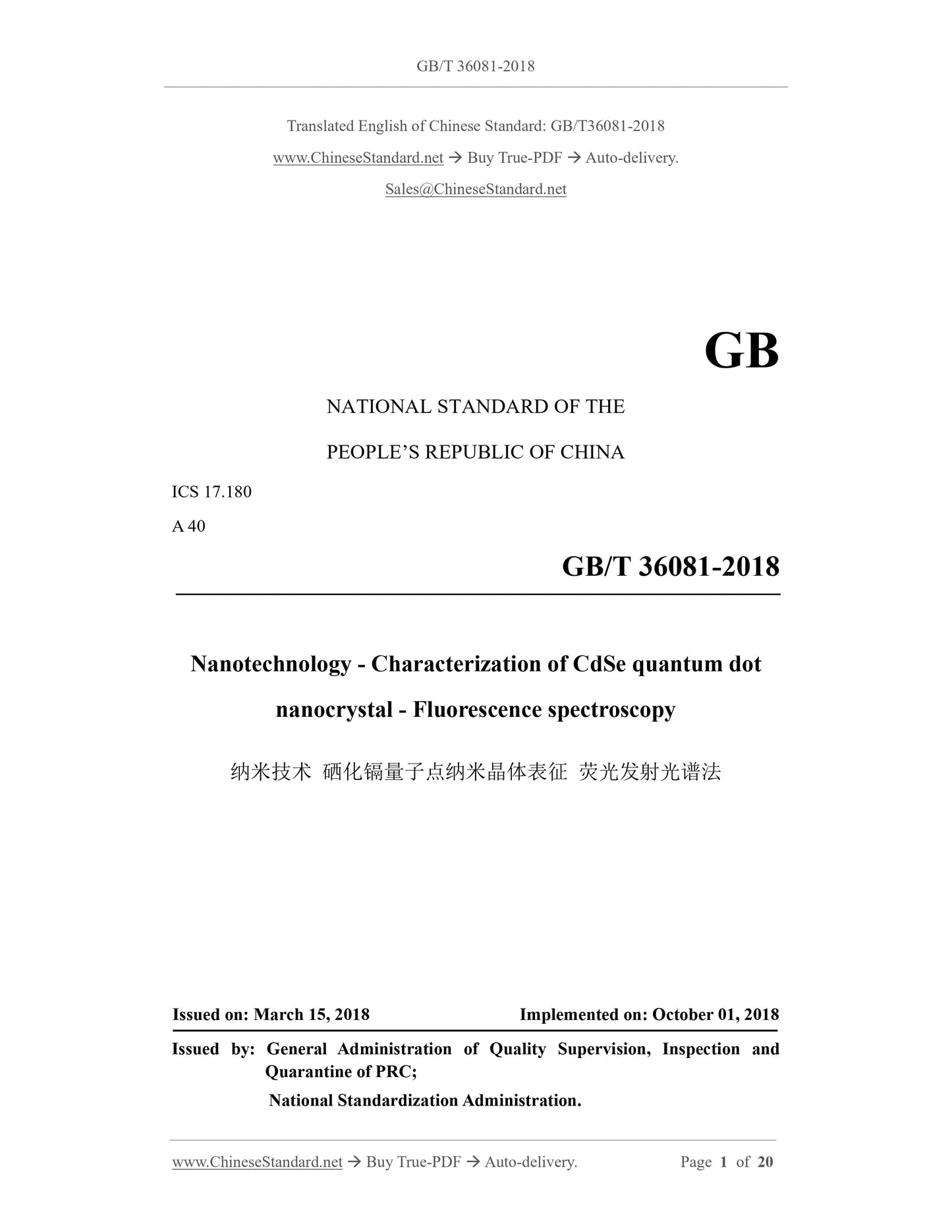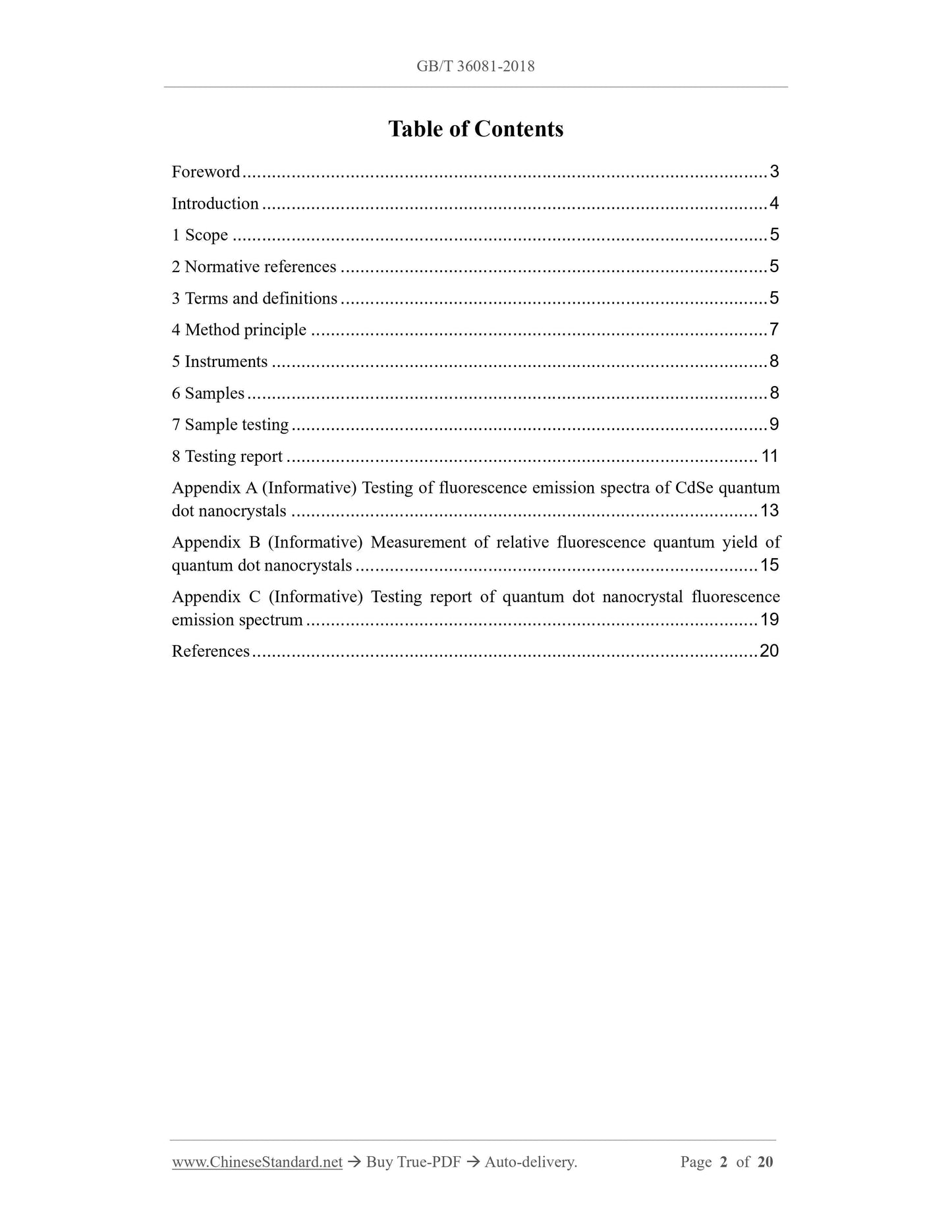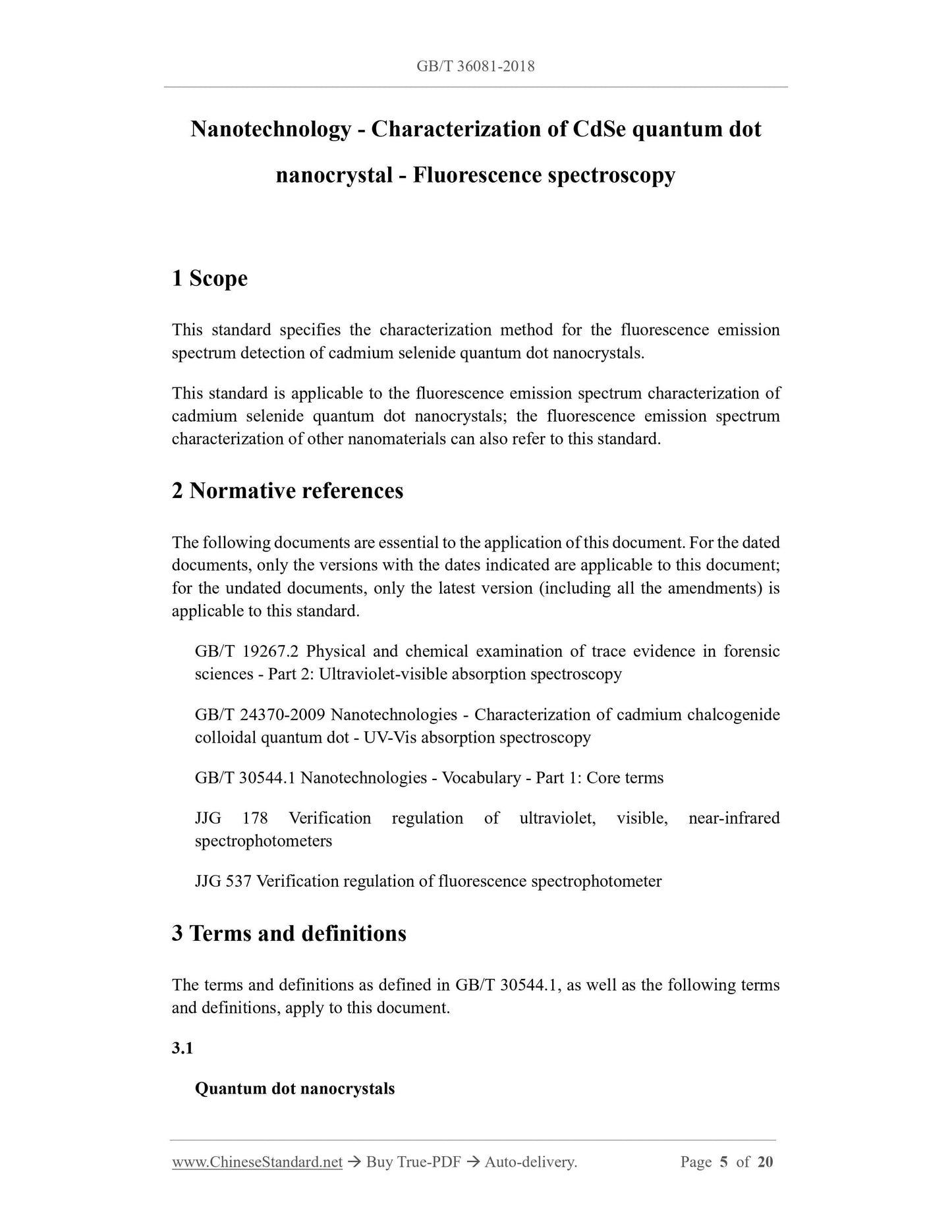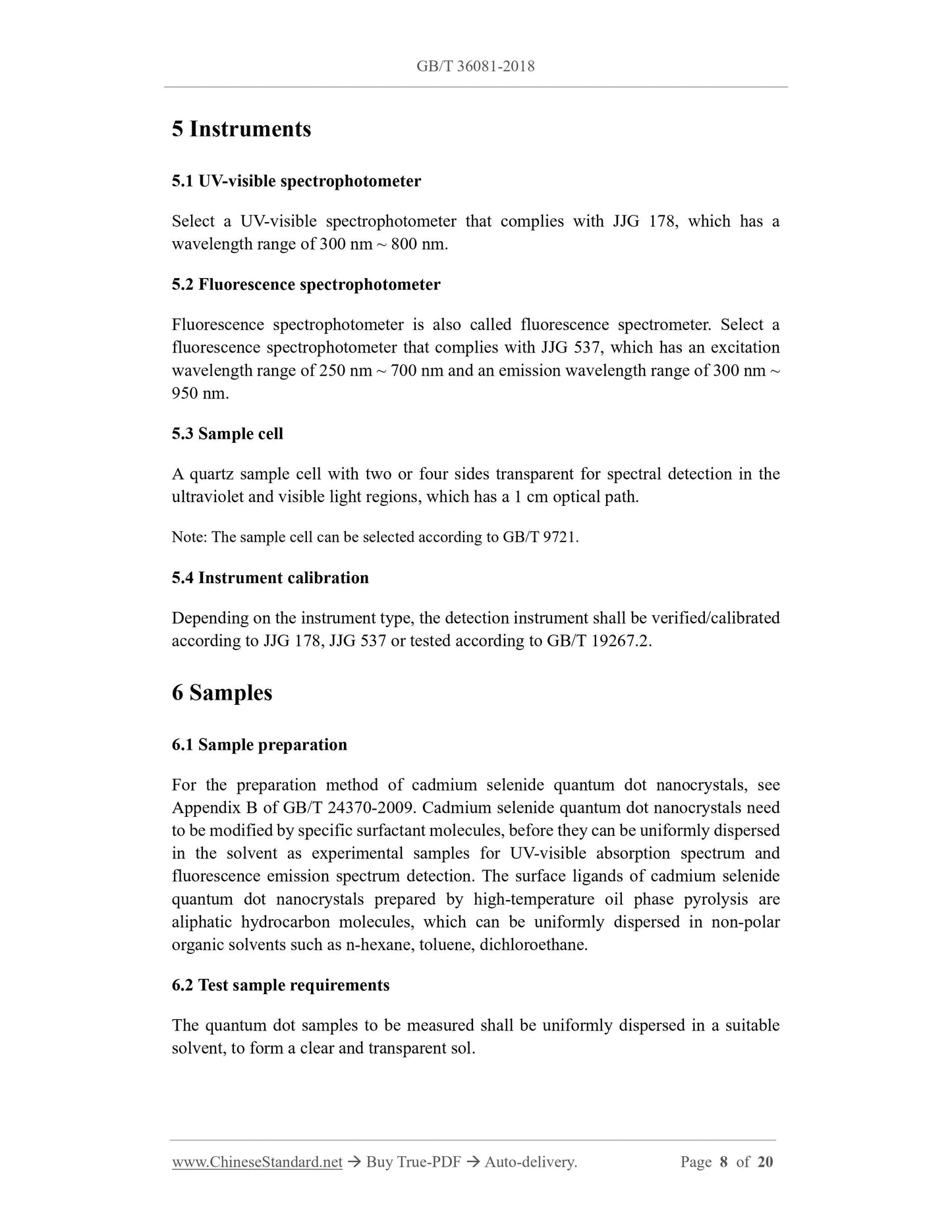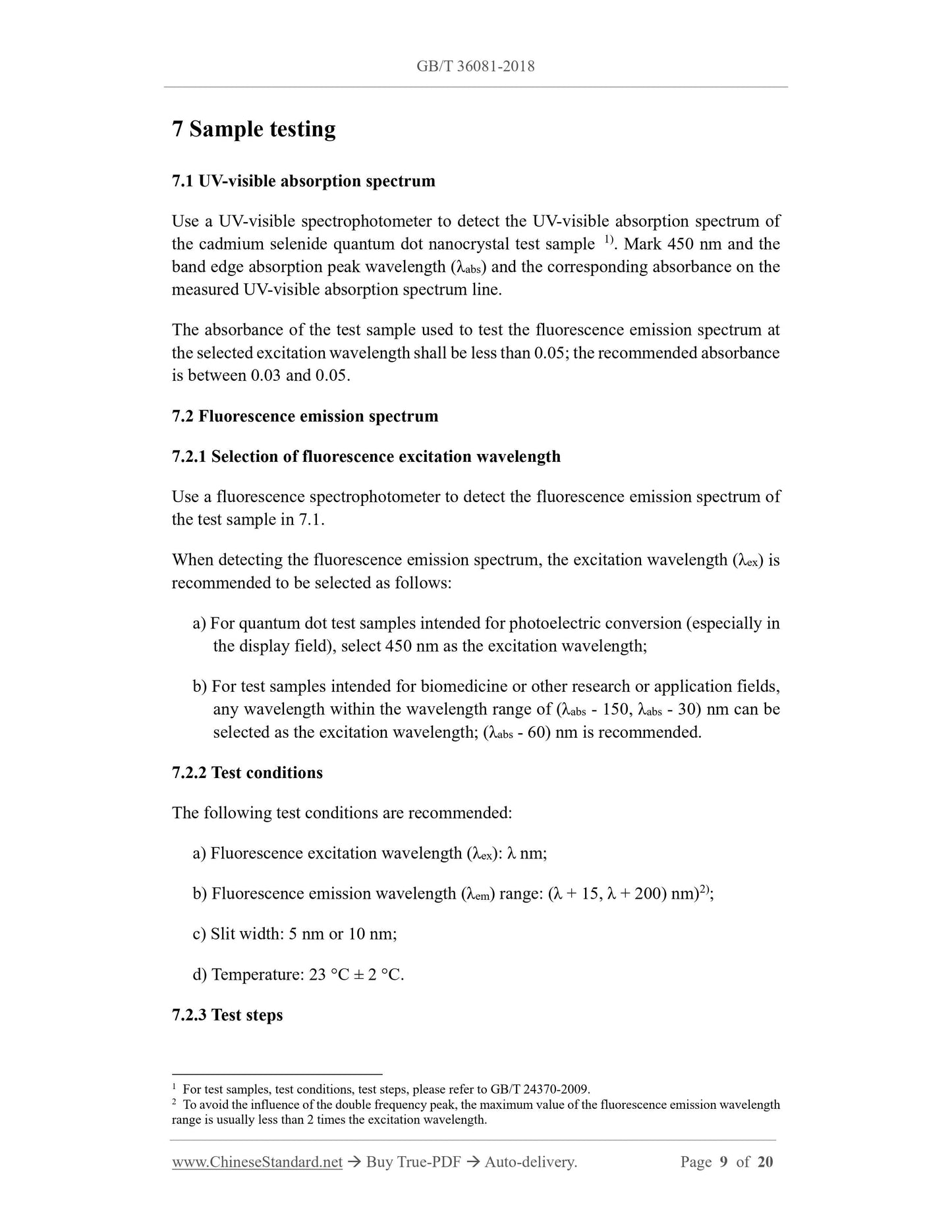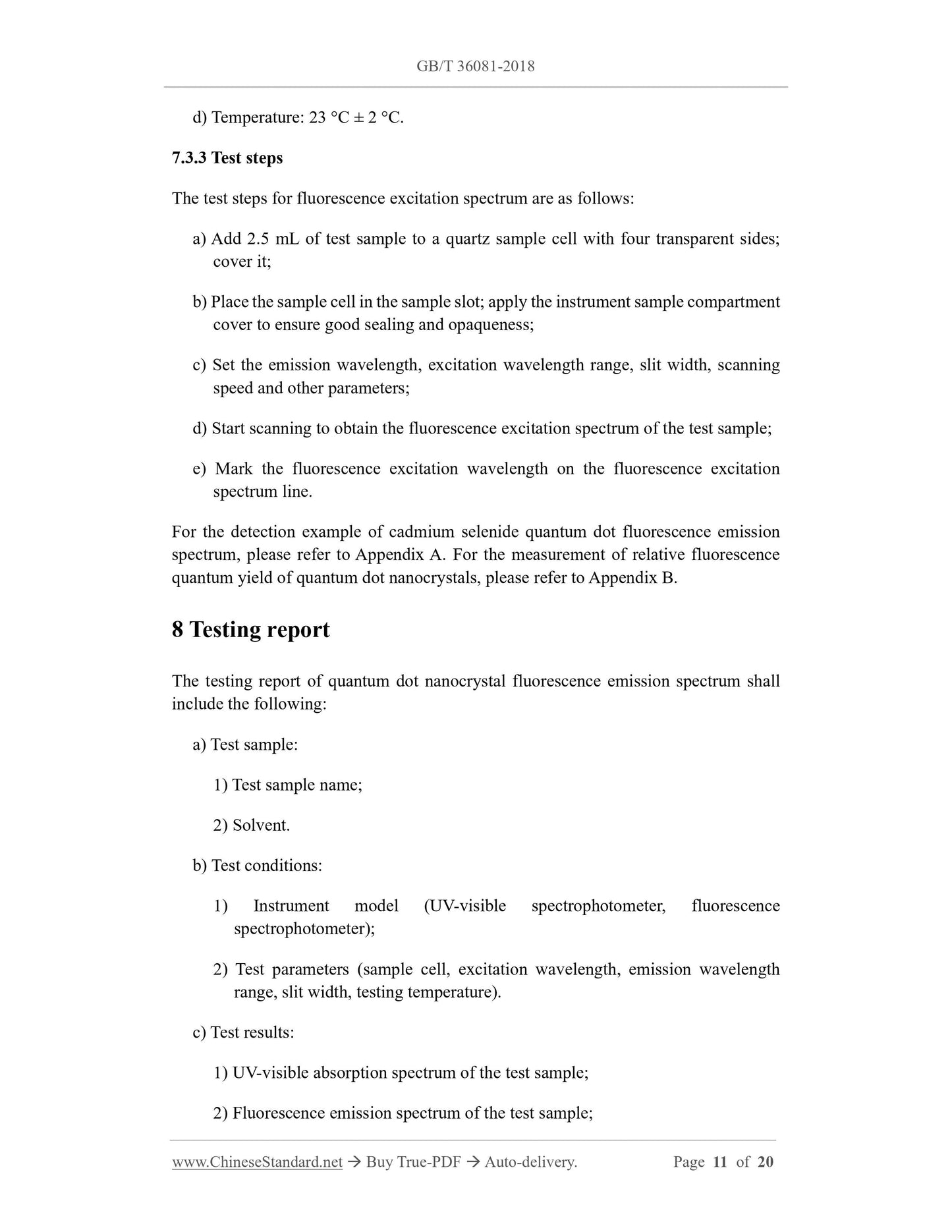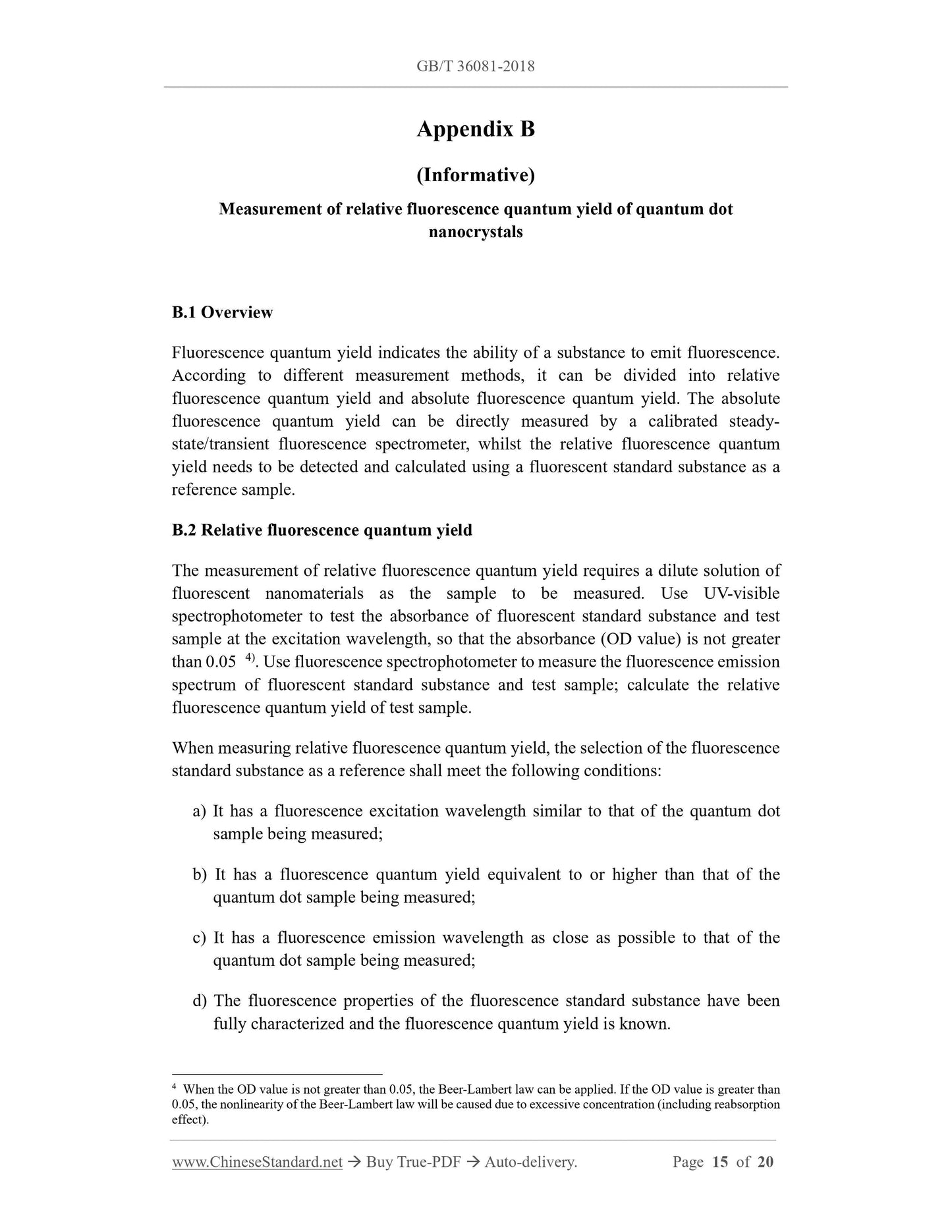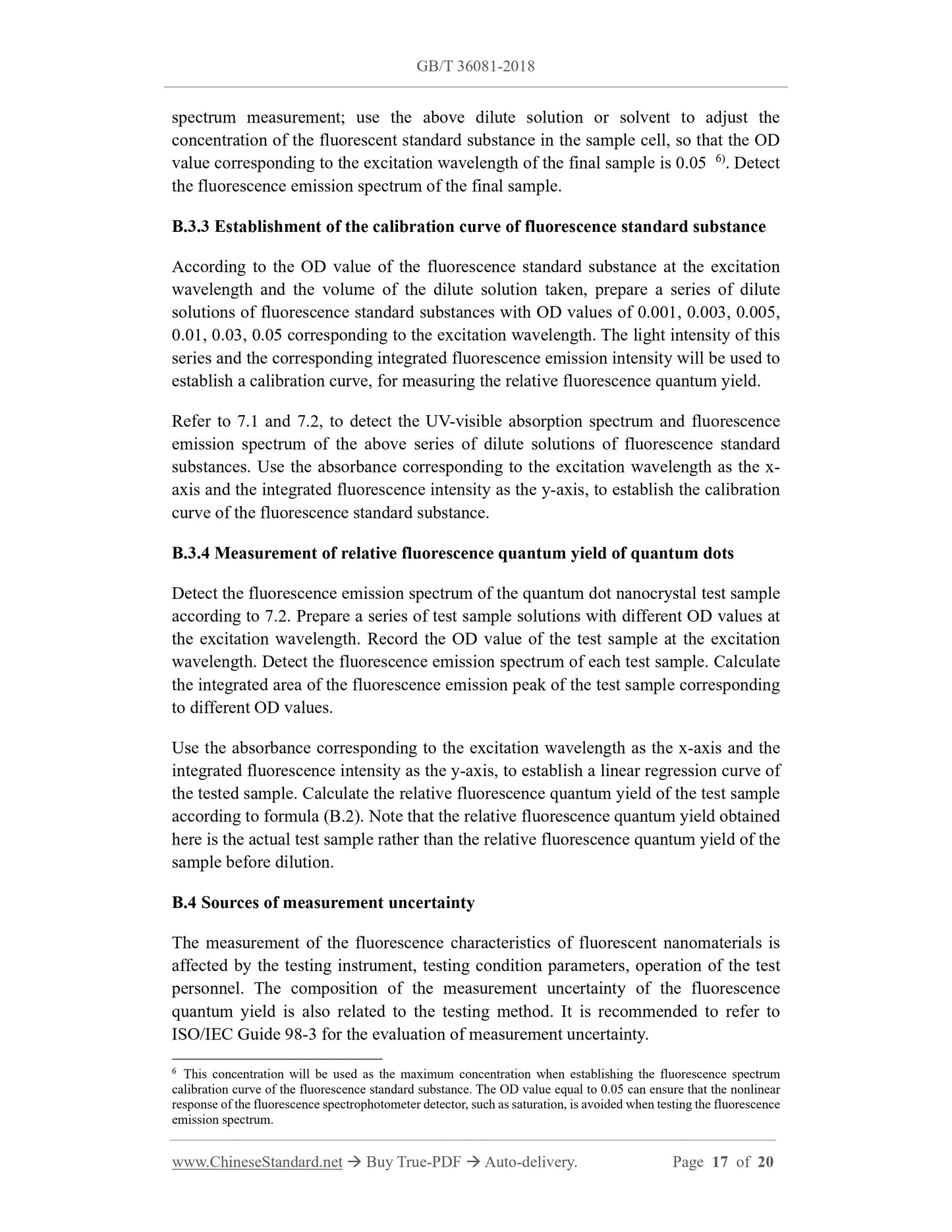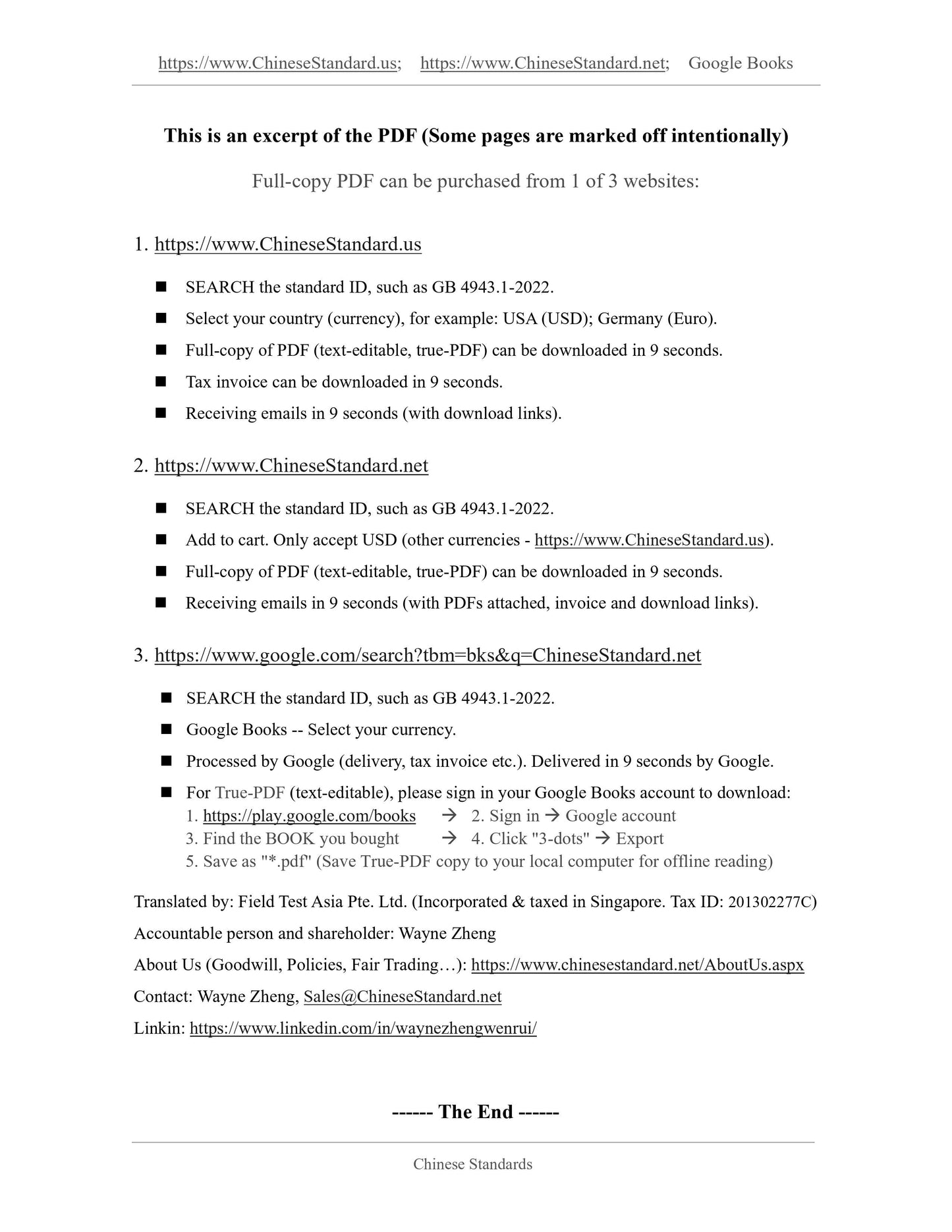1
/
of
9
www.ChineseStandard.us -- Field Test Asia Pte. Ltd.
GB/T 36081-2018 English PDF (GB/T36081-2018)
GB/T 36081-2018 English PDF (GB/T36081-2018)
Regular price
$250.00
Regular price
Sale price
$250.00
Unit price
/
per
Shipping calculated at checkout.
Couldn't load pickup availability
GB/T 36081-2018: Nanotechnology - Characterization of CdSe quantum dot nanocrystal - Fluorescence spectroscopy
Delivery: 9 seconds. Download (and Email) true-PDF + Invoice.Get Quotation: Click GB/T 36081-2018 (Self-service in 1-minute)
Newer / historical versions: GB/T 36081-2018
Preview True-PDF
Scope
This standard specifies the characterization method for the fluorescence emissionspectrum detection of cadmium selenide quantum dot nanocrystals.
This standard is applicable to the fluorescence emission spectrum characterization of
cadmium selenide quantum dot nanocrystals; the fluorescence emission spectrum
characterization of other nanomaterials can also refer to this standard.
Basic Data
| Standard ID | GB/T 36081-2018 (GB/T36081-2018) |
| Description (Translated English) | Nanotechnology - Characterization of CdSe quantum dot nanocrystal - Fluorescence spectroscopy |
| Sector / Industry | National Standard (Recommended) |
| Classification of Chinese Standard | A40 |
| Classification of International Standard | 17.180 |
| Word Count Estimation | 14,156 |
| Date of Issue | 2018-03-15 |
| Date of Implementation | 2018-10-01 |
| Issuing agency(ies) | State Administration for Market Regulation, China National Standardization Administration |
Share
